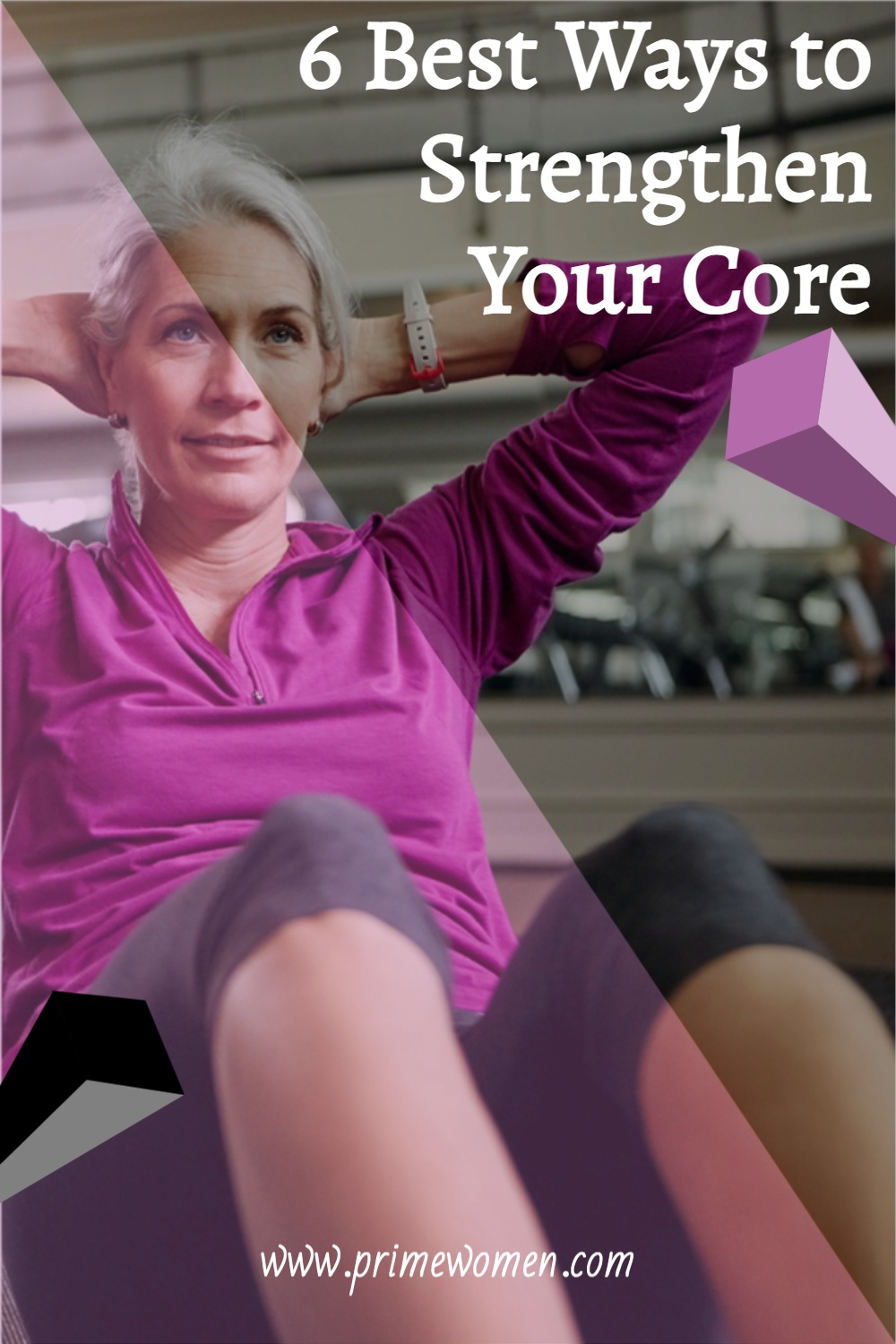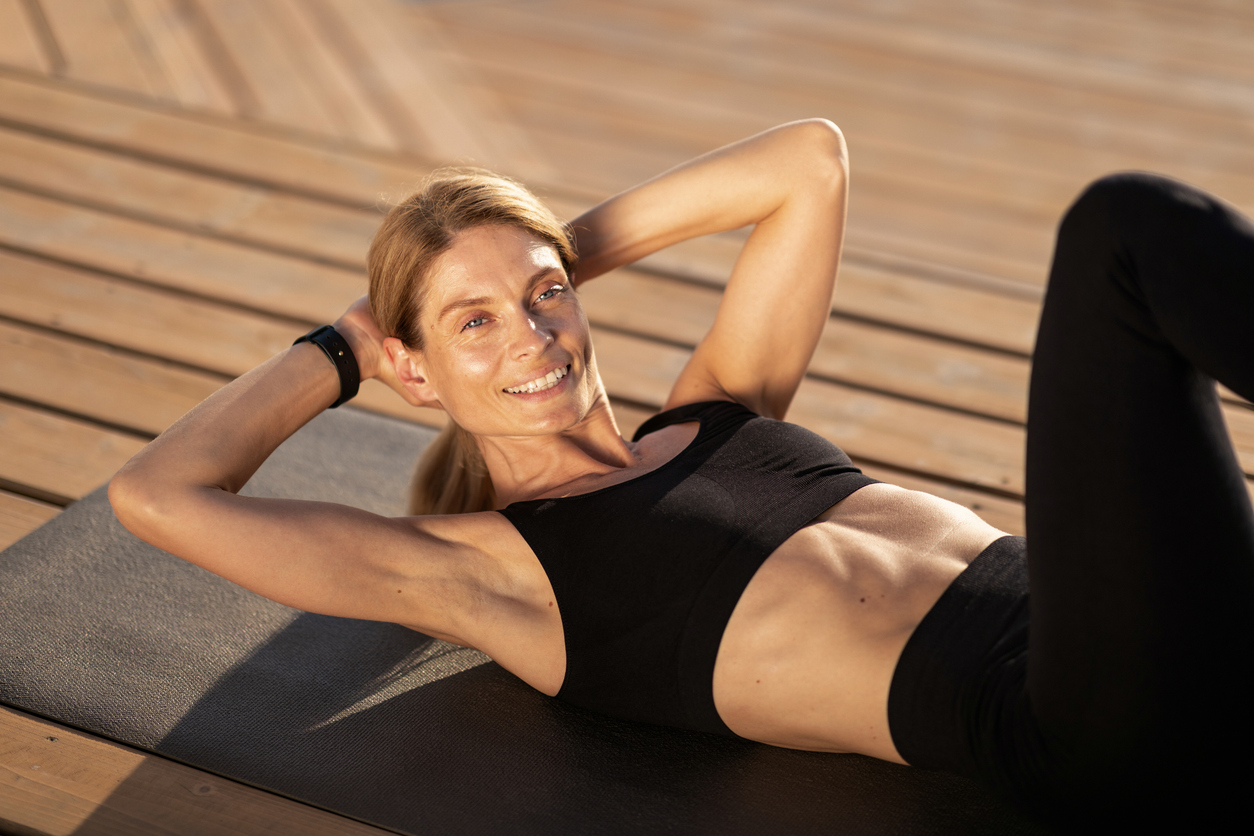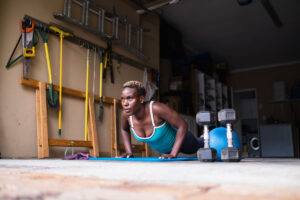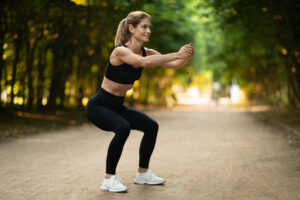Many people only think of a six-pack when they hear the word “core.” While a six-pack would be nice, there is much more going on beneath the surface than those visible abs, and it’s essential to take the steps to strengthen your core.
The core doesn’t get the attention it deserves when it comes to all the health benefits it provides. One of the reasons you want a strong core is that it can help you suffer from less back pain. In addition to that, a strong core can help you immensely with your balance and maybe even your posture. When you look at it, a strong core can make everyday activities easier to do. Take a moment to think about all the different moves you do throughout the day that involve your core.
Are you convinced that having a strong core is essential and goes beyond just the appearance of abs? If so, let’s get into the details of the different muscles in your core.
Your Core Muscles
There are four layers of muscles in your core. Here they are, from the deepest to the surface:
- Transverse abdominis. This is the deepest muscle layer in your core. It helps to keep your torso stable.
- Rectus abdominis. This is between the ribs and the pubic bone at the front of your pelvis. When contracted, this is the muscle that is known as the “six-pack.” This muscle helps to move your body between the ribcage and pelvis.
- External oblique muscles. These are on both sides of the rectus abdominis. These external muscles allow your torso to twist.
- Internal oblique muscles. These are just inside the hipbones and work together with your external oblique muscles to help you twist your torso.
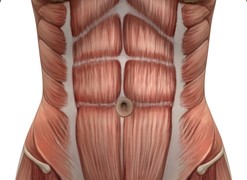
Because you involve these muscles in so many different exercises, you don’t have to do moves that exclusively target these muscles in order to get them working. That’s one reason why we love the core so much. Take deadlifts, for example. You wouldn’t consider them to be a core workout, but in order to do deadlifts properly and protect your back, you need to engage your core. Core workouts sneak into all kinds of workouts.
Here are some of the top core workouts that focus specifically on the core and will work to build your core the fastest.
6 Core Workouts You Don’t Want To Miss
1. Plank
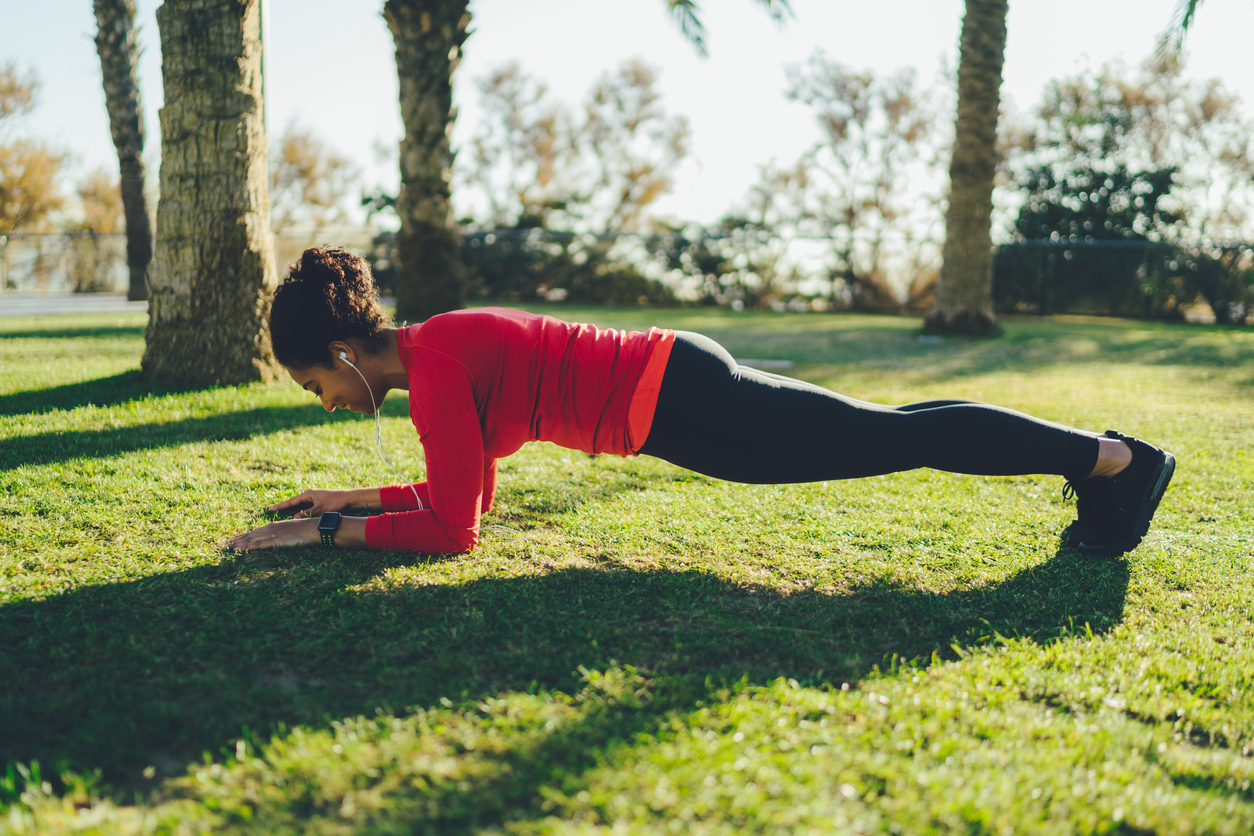
You are likely no stranger to the plank. Though this isn’t a favorite core exercise, it does get the job done. It is simple, straightforward (literally), and also works to build strength in your back, glutes, and hamstrings. The plank will also aid in your posture and your balance. It is also a great place to start, and it’s easy to build on as far as the level of complexity. For example, you can do plank dips, you can do a plank rock, and more.
How to do it:
- Put your forearms on the floor.
- Align your elbows underneath your shoulders.
- Form your body into a straight line with your tailbone tucked in.
- Engage your core as well as your glutes and your quads.
- Direct your gaze down to your hands to keep your neck in a neutral position.
- Hold for at least 30 seconds, but for as long as possible.
2. Bridge

This workout is great for your abs and also for your glutes. We love a two-in-one and think you will also. A bonus is that you get a thigh workout, too!
How to do it:
- Lay on your back.
- Bend your knees and put your feet hip-width apart on the floor.
- Put your hands palm down at your sides.
- Engage your core and glutes.
- Raise your hips to the ceiling until your knees are in line with your shoulders.
- Hold for 20 seconds and return to the start.
- Repeat as many times as you’d like.
3. Shoulder Tap

This exercise will get your midsection fired up in no time because it’s a bit more challenging for your core. It will also help you focus on balance, which is a great bonus.
How to do it:
- Start on the floor on all fours, in a tabletop position.
- Engage your core and lift your knees a couple of inches off the floor.
- Be sure to keep your back flat and tuck your tailbone in so it doesn’t puff up.
- Maintain your balance and try not to rock too much from side to side as you pick up your right hand and tap your left shoulder.
- Return your right hand to the floor and then pick up your left hand and tap your right shoulder.
- Keep your hips as still as possible and continue alternating sides.
4. Supine Toe Tap
This basic Pilates exercise does wonders for your core. It’s another one that goes beyond just working the core and also engages your glutes, hips, and legs.
If you have back problems, this exercise is a great alternative to crunches, which can make back and neck issues worse.
How to do it:
- Lie on your back with knees bent to 90 degrees.
- Put your hands at your side, palms down.
- Engage your core as you lower your right foot and tap it on the floor, keeping your left leg at 90 degrees.
- Bring your right leg back to the starting position and repeat with your left leg.
- Do this for at least 12 reps.
5. Bird Dog + Elbow to Knee
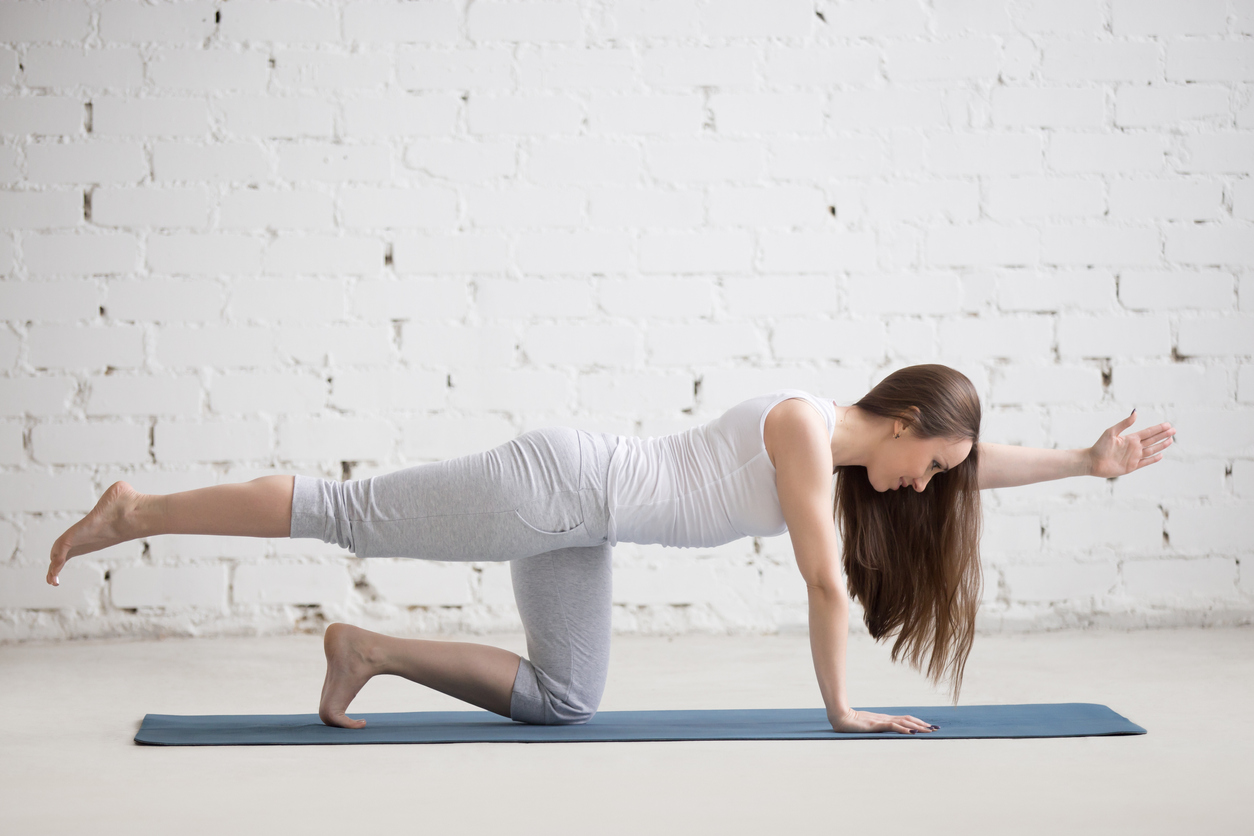
Take the already-great bird dog core workout and elevate it by adding the touching of your elbow to your knee. This is a more advanced move that will get into your core muscles. It is excellent for core mobility as well since it works all of the different parts of your core.
How to do it:
- Start on all fours, in a tabletop position.
- Engage your core as you lift your right leg to hip level.
- At the same time, lift and extend your left arm to shoulder level (pictured below).
- Bring your right knee and your left elbow to touch.
- Return to your tabletop starting position.
- Repeat on this side for at least 12 reps.
- Then switch to the other side and repeat.
6. Tabletop Leg Press
If you suffer from back problems, this exercise will become your best friend. It protects your back while working to strengthen your core and helps you connect to your core so you can better learn how to engage it properly.
How to do it:
- Lie on your back with your legs at a 90-degree angle.
- Engage your abs and press your lower back into the ground
- Crunch up slightly and put your hands on your quads.
- Push your quads into your hands while using your hands to push your quads away.
- You should not move at all in this exercise, but should feel the tension between the push/pull you’re creating.
This is a good place to start in building that strength in your core. By incorporating these exercises into your daily routine and taking just a few minutes to do each, you will quickly notice a difference in your core strength, which will also help you with your back, your posture, and your balance.
If you want even more exercises for your core, check out one of our videos:
Read Next:
What Running ACTUALLY Does To Our Brains
Plank For Core: The Good, Bad, and Ugly
